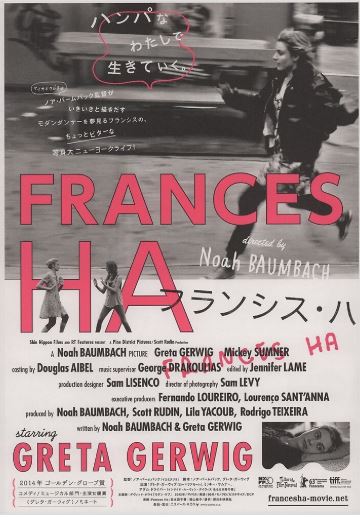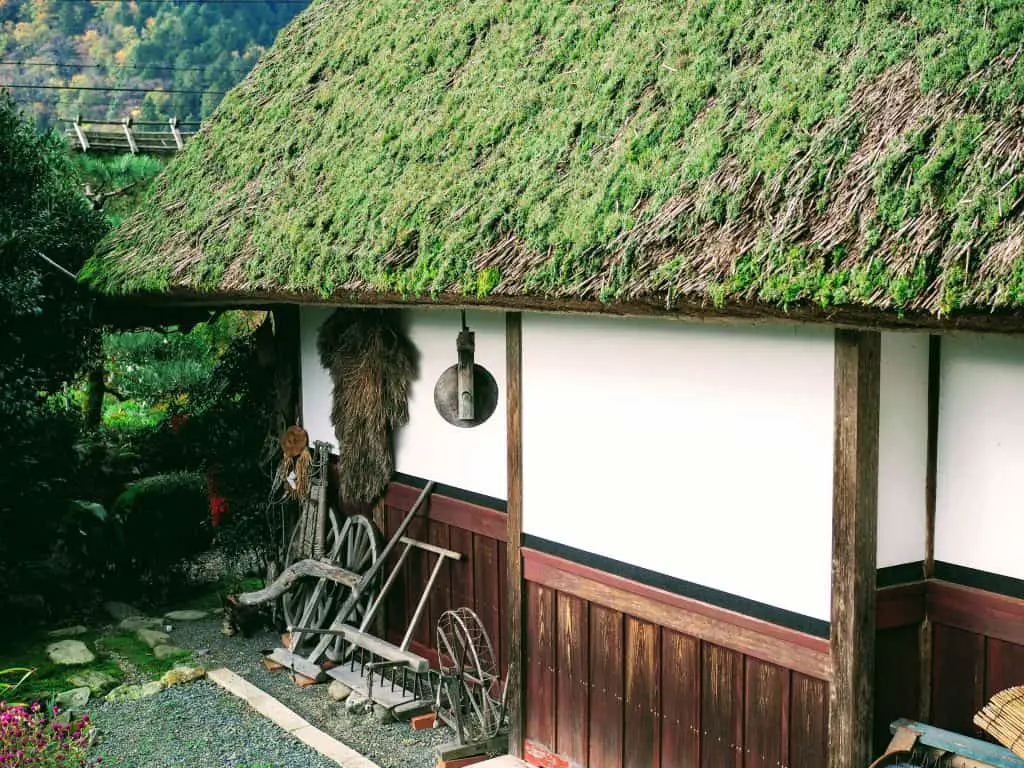
Why leave all the Japan in Japan? Traditional Japanese interior design is characterised by minimalist understatement, the use of muted tones and the delicate interplay of light and shade.
Contemporary Japanese design tends to either build on this aesthetic, or flamboyantly rebel against it – most notably in ultra colorful, kawaii-cute cultural explosions.
With this in mind, I’ve listed my top 10 elements for creating the perfect Japanese Home Decor aesthetic at home:
- Incorporate natural elements and greenery (and Vases)
- Embrace light and shade using Japanese lighting
- Make walls that transport you to an exotic world with Japanese Wall Art
- Create “virtual” spaces using Noren
- Change bathing an experience using a Japanese soaking tub
- Places patches of art on your floor with Japanese Cushions (Zabuton)
- Cool your atmosphere with Japanese Bamboo and Matchstick Blinds
- Love your floor with Japanese Tables, Chabudai
- Create a heat bubble in your living room with a Kotatsu Japanese Heated Tables
- Lose the shoes inside and put them in the shoe rack
#1
Incorporate Natural Elements and Greenery
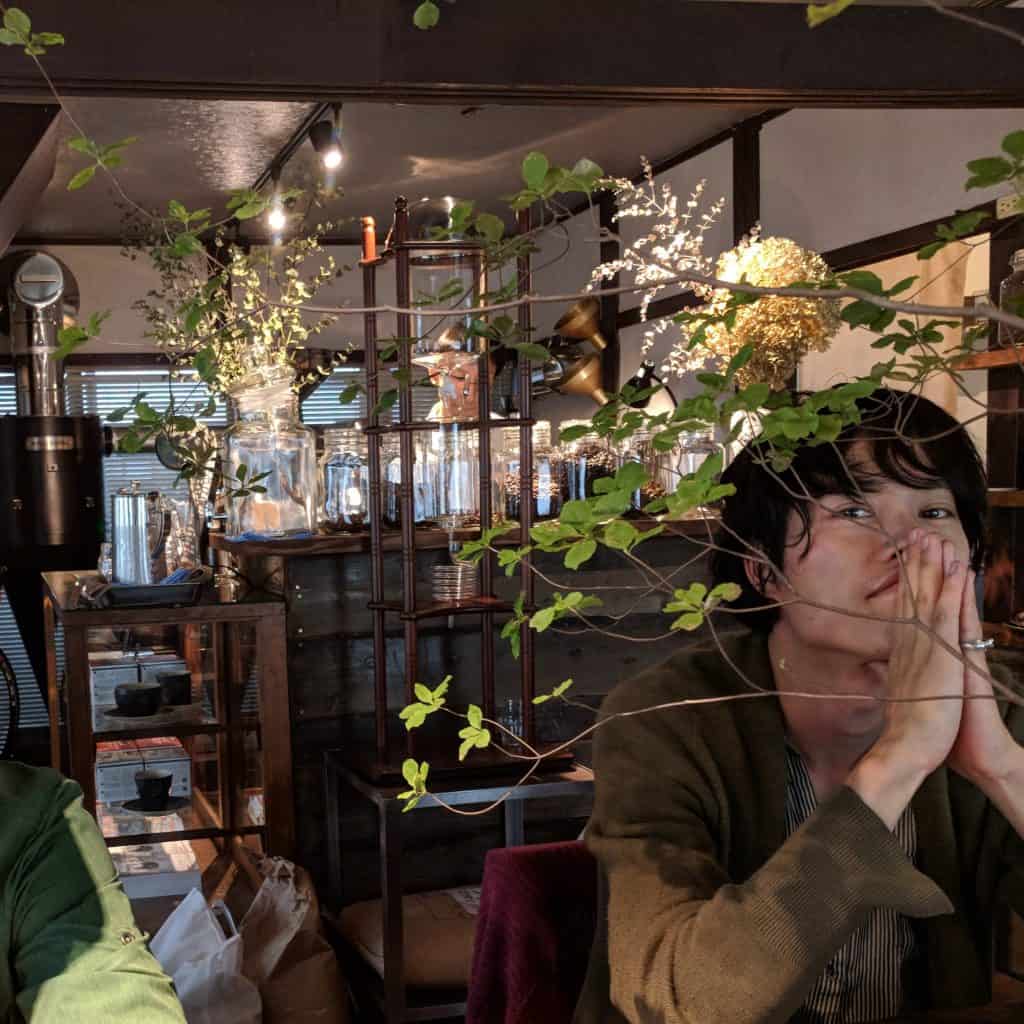
Japanese design has a masterful knack of blending the outer world with the innder world and has had a huge influence on the open plan, outside-inside design of modern houses around the world.
Think about what is outside the house that you can bring in. Your house doesn’t exist in a vacuum. What is the environmental context you are in? What do you notice when you’re walking in your neighbourhood? What deserves to be celebrated?
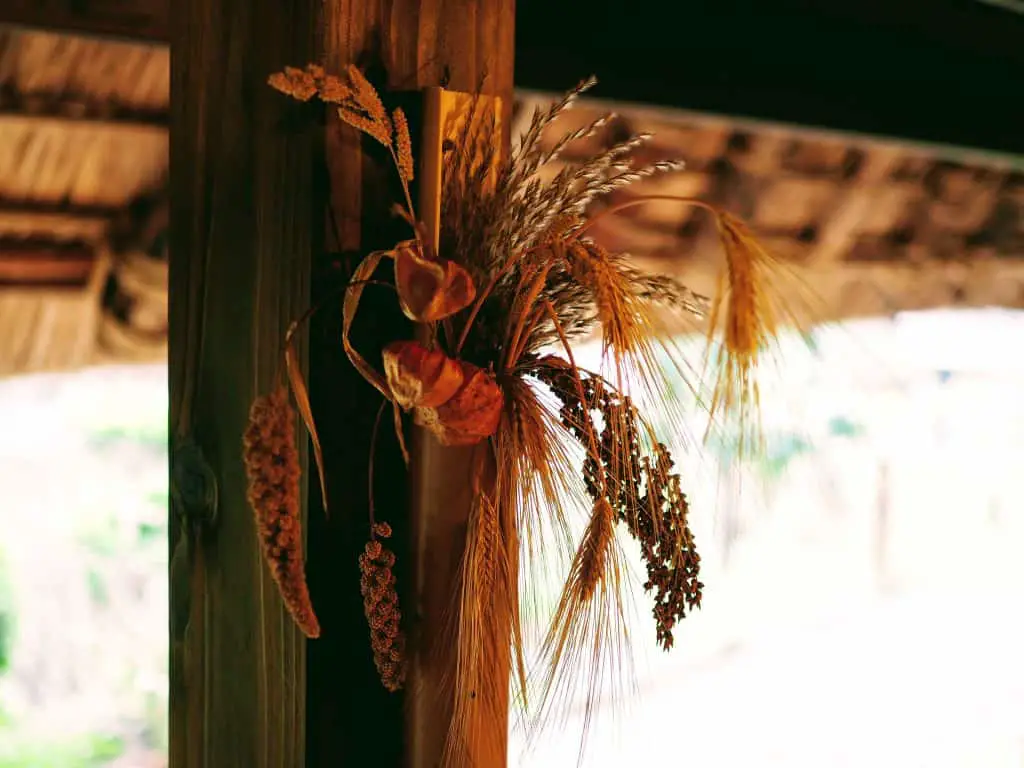
Shakkei 借景
On the larger end of the scale, Japanese houses famously use sliding doors to open up whole sides of a room to the garden. They even have the concept of Shakkei or 借景 meaning “borrowed landscape”, which describes the concept of framing a distant feature, such as a mountain or tree, so that it looks like it is somehow actually part of a room. In this way, the vista becomes endless.
A famous example of this is the gardens at a temple called Entsuji in Kyoto, where you have a mountain in the distance, which is framed by trees in the garden, which are bordered by a hedge, which lead to a rock garden which evokes the mountain, which leads to a veranda which frames the hedge, leading to rooms which have beams that parallel the trees outside.
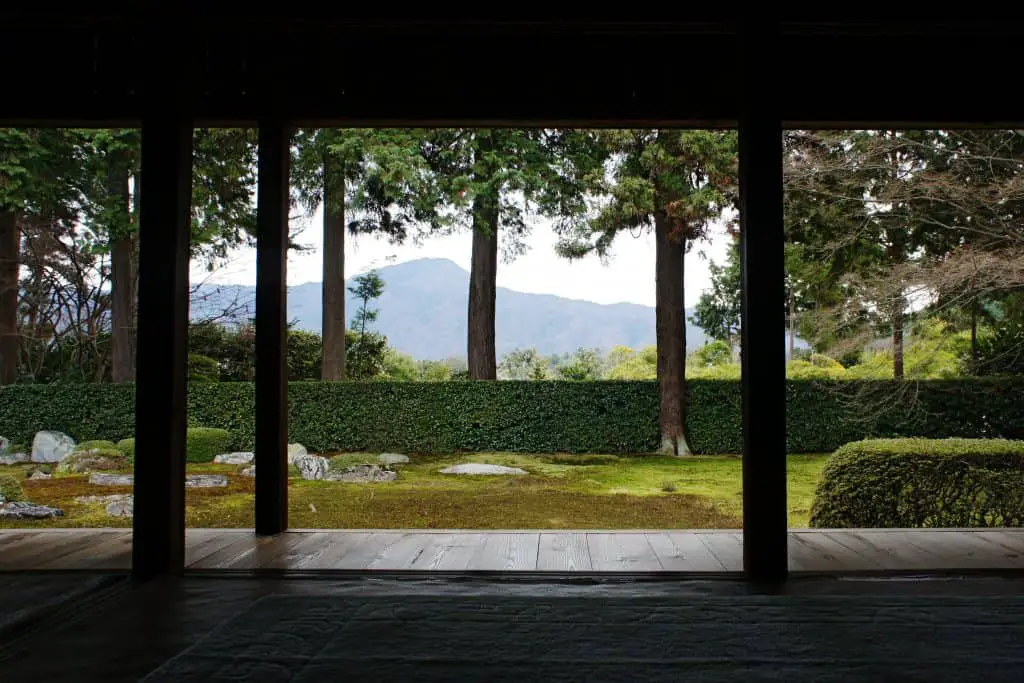
But things don’t need to be as grand-concept as all that. It can be as simple as having a smaller version of a tree or plant inside the house that is also outside a house. It could be that you frame your window with a couple of stand-up lights. Perhaps you find a way to parallel a street light outside and turn something that might be considered an eyesore into a feature of your view. Get creative.
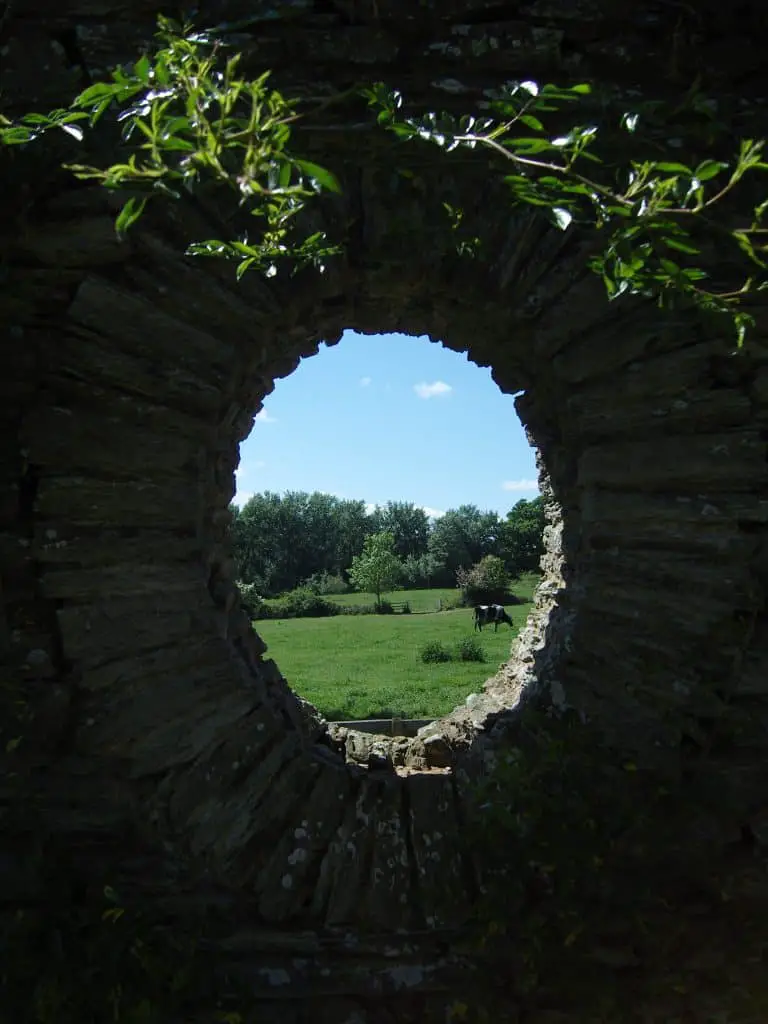
Nakaniwa 中庭
There is also the idea of the Nakaniwa (中庭)meaning “inside garden”, which describes a garden that exists in a smaller inner quadrangle in the middle of the house.
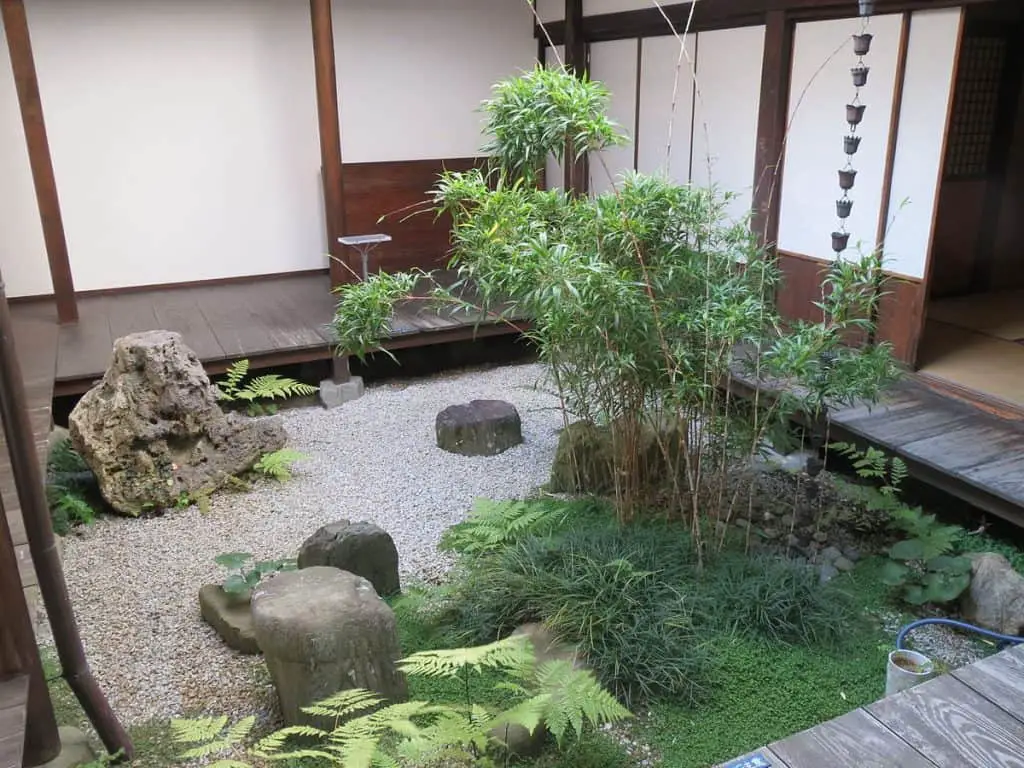
Kokedama 苔玉
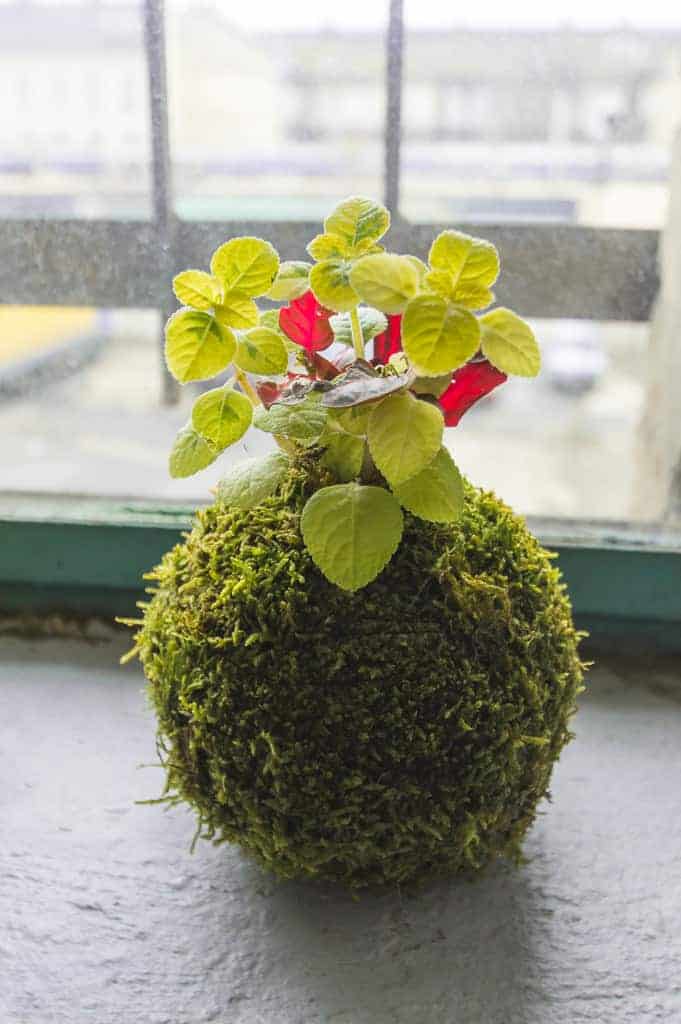
A fantastic & easy way to get a little green into the house is to make a Japanese style Kokedama moss ball. These are really the most space-saving plants that you can use. Basically little balls of soil wrapped in moss, the moss cover becomes the vessel which holds the plant in place. This means you don’t need a pot. You can either hang them from the roof or put them on a small plate. Put them on a dining table, suspend them over a balcony, add a little green to a bathroom.
Japan is one of the highest populations in one of the smallest areas on the planet, and as such they have become masters in the efficient use of tight spaces. If you’re trying to beautify a confined apartment or living area, there’s no better lead to follow!
To make things even easier, you could use a premade kit such as this one:
Vases 花瓶
Probably the easiest way to start bringing the outside greenery in is to just grab some things from any surrounding garden to display around the house. This idea is hardly new, but the Japanese aesthetic generally broadens out the concept of simply putting some flowers in a vase. Japan has an elaborate tradition of Ikebana, which literally means “living flower”, where the goal is not simply to “arrange” flowers but to make them appear as if they were actually growing in your living room. Often, these arrangements use parts of a plant that Western flower arrangement has not incorporated, such as larger branches, reids and foliage.
When you start thinking about all the things in the environment that you could display in your home, your horizons truly broaden. You stop focusing just on flowers and bright colors, but also start to notice leaves, stones and wood.
To help with the arrangement of foliage, there is a wide array of Japanese style vases and flower stands to choose from. You can go for anything from a minimal Ikebana style base in which you stand up your arrangements, through to more classic, pan-asian influenced Japanese Cloisonne Vases, Peacock Vases and Porcelaine.
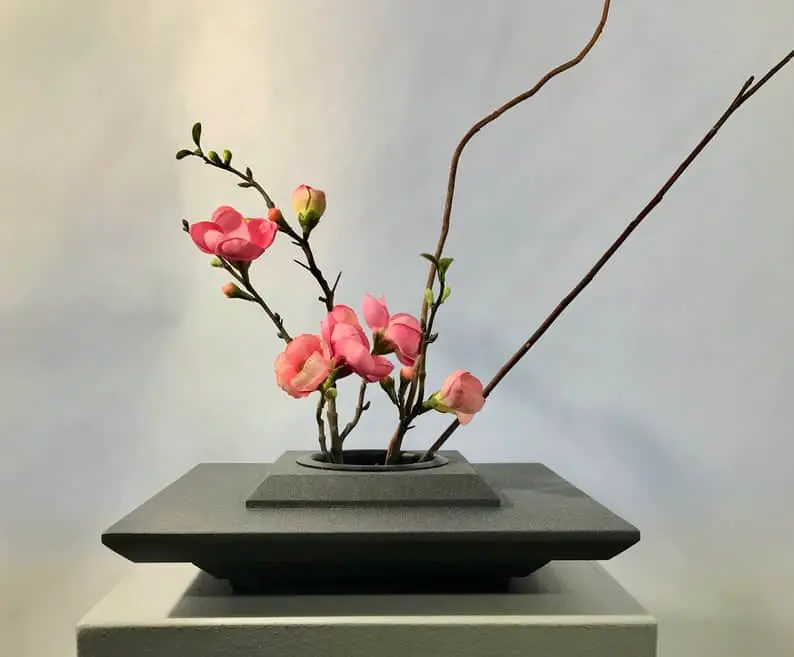
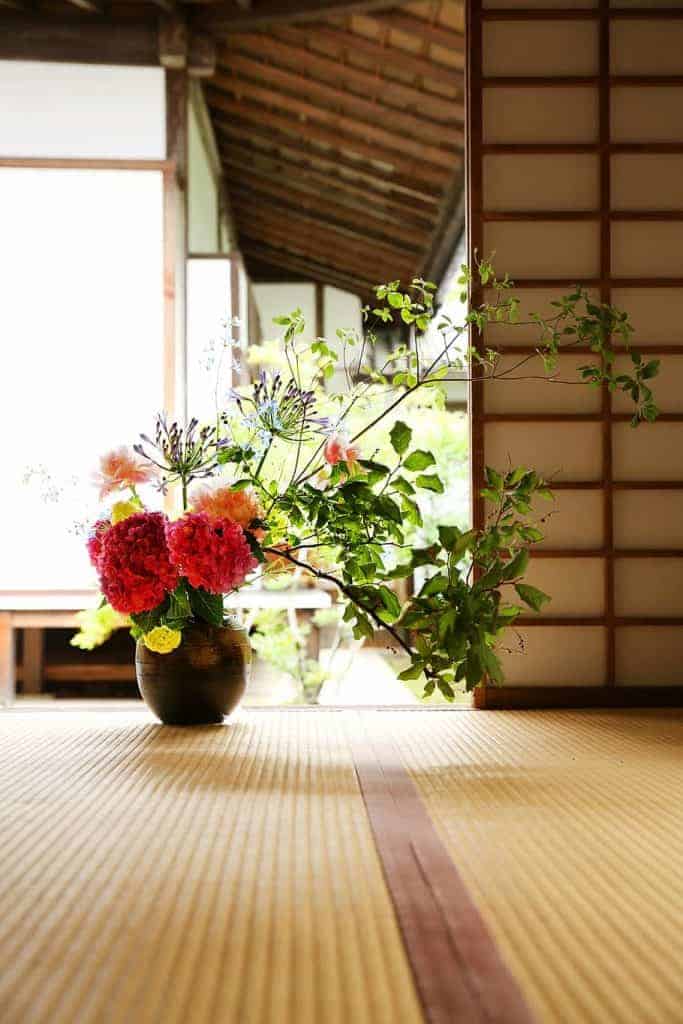
#2
Embrace light and shade using Japanese Lighting
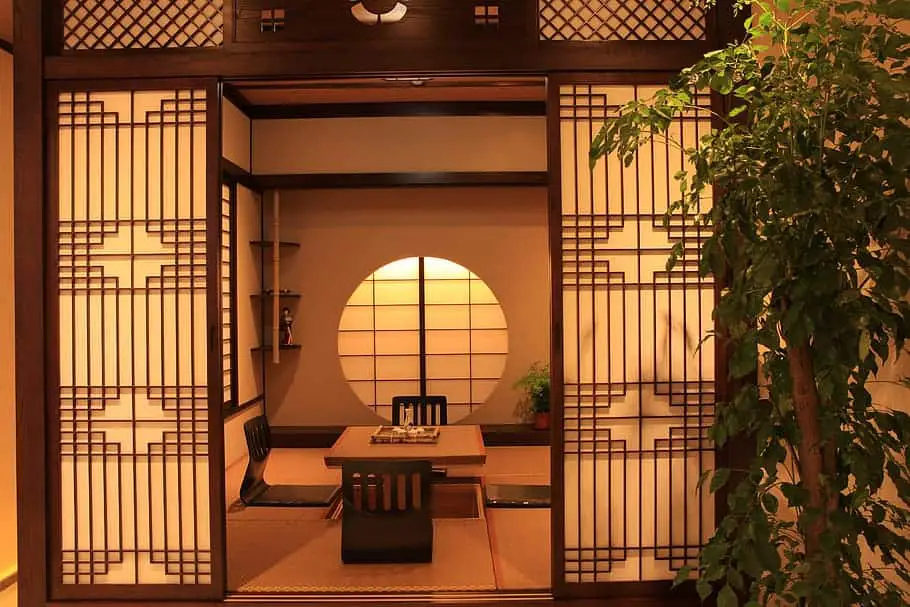
There is no single change you can make in a room that more instantly transforms the overall feel than changing the lighting.
Indeed, Junichiro Tanizaki’s classic book “In Praise of Shadows” is completely devoted to the subject of light and shade in Japanese aesthetics.
Japanese interiors are characterised by subtle, moody lighting. Here’s some examples of Japanese lamps and shoji lamps that can help brighten up, in an understated way, a room that is lacking something.
Strictly speaking, a “Shoji” refers to a sliding door with washi Japanese paper on it. Though not strictly correct, the term “Shoji lamp” has become synonymous with lights that are made in a similar style to these doors, out of wood and paper or modern materials that reflect this aesthetic.
These Japanese lamps are usually designed to be used either on the floor or on a table. There are even traditional styled lamps that smart functionality built into them now too. So you can, say, charge your phone or control them remotely.
Examples of Japanese Lights & Shoji Lamps
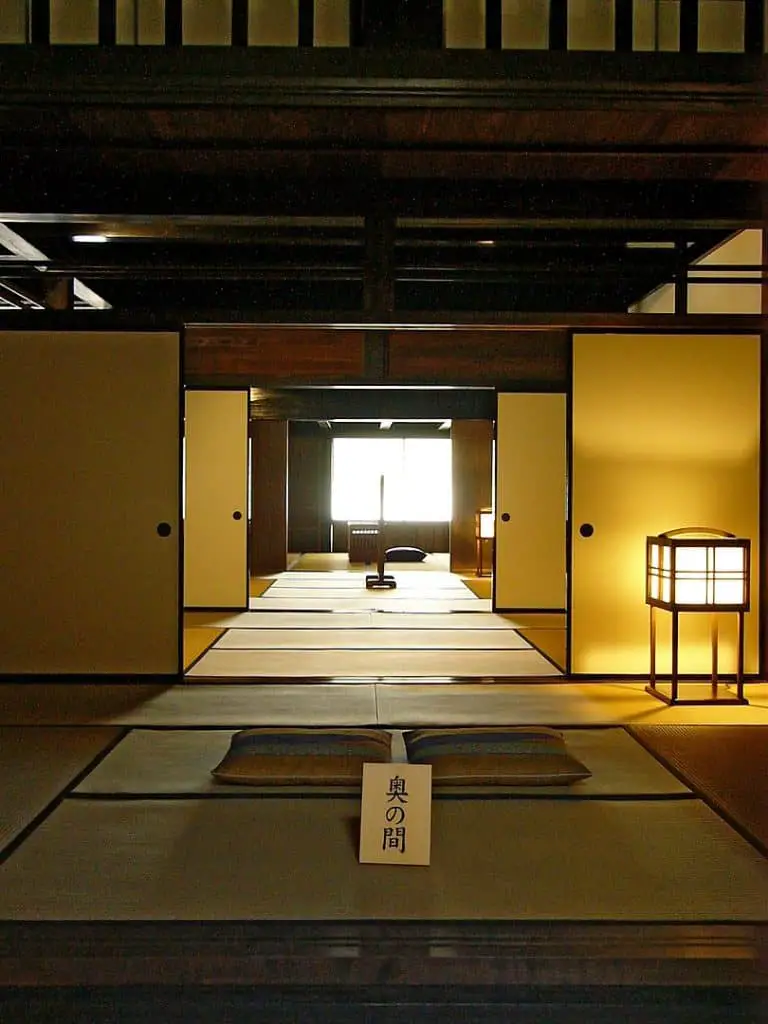
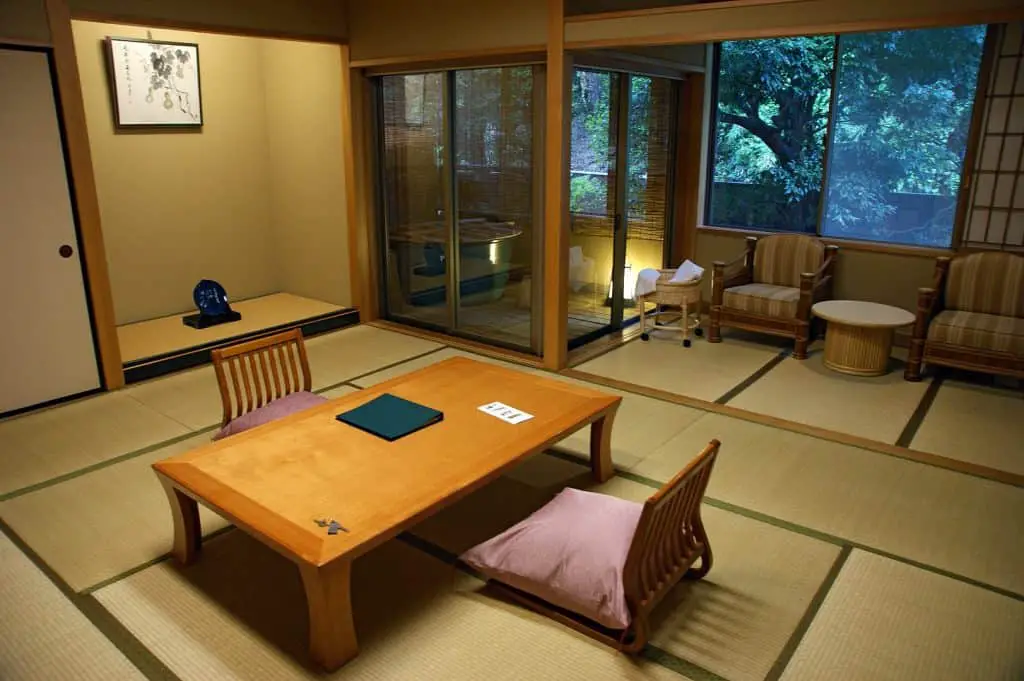
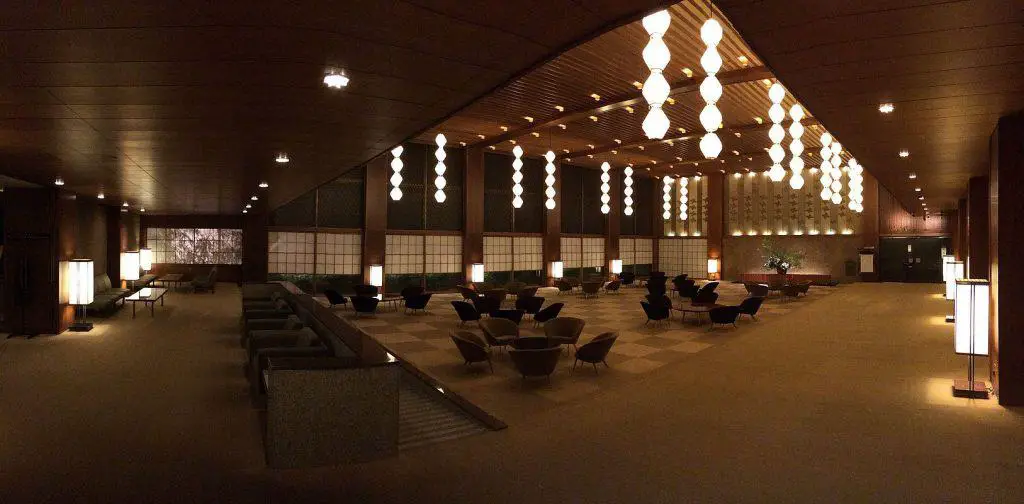
If you’re wanting to go deeper on lighting, we have a whole section highlighting (see what we did there) our favourite Japanese Lamps or and specifically about Japanese Shoji Lights here. Or read Tanizaki’s In Praise of Shadows.
#3
Make walls that transport you to an exotic world with Japanese Wall Art
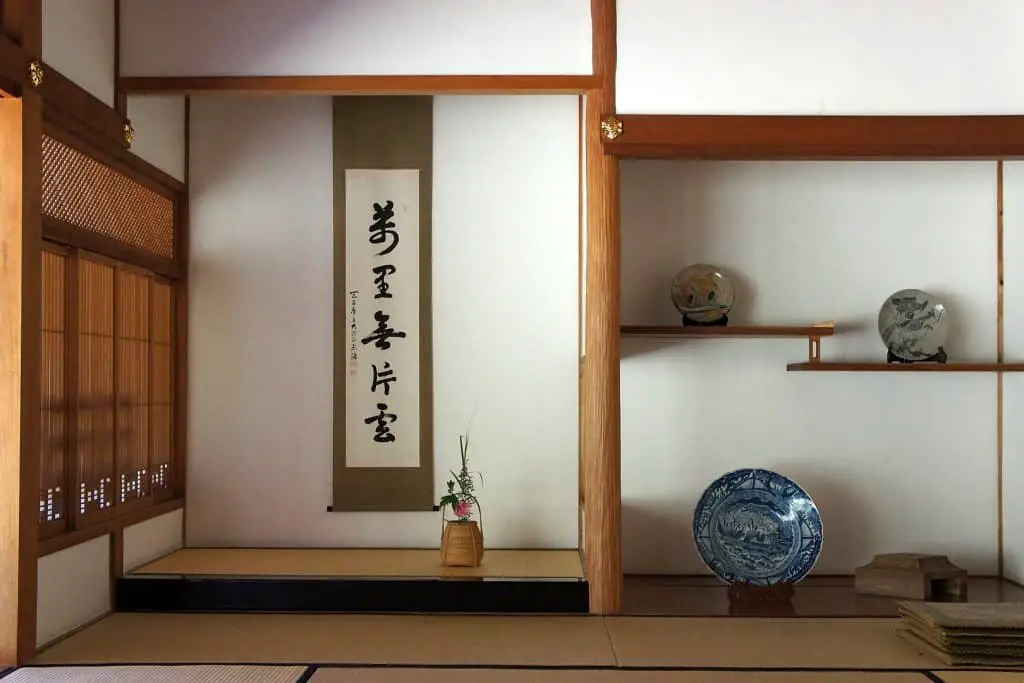
Japanese wall art can create little windows into distant times and places. Wall art, often literally drawn on the “wall” or sliding door, has been a part of Japanese home decor and decoration for millenia. From ink paintings, to calligraphy, seasonal art, pictures of animals and Gods, Japanese people have never been shy about putting a nail in the wall (figuratively speaking).
Toko-no-ma 床の間
Traditional Japanese living rooms feature a dedicated set-back recess area called a Toko-No-Ma that usually featured some kind of Japanese Wall Scroll and/or Ikebana flower arrangement. Traditionally, these were one of a kind artworks, often by artists of renown.
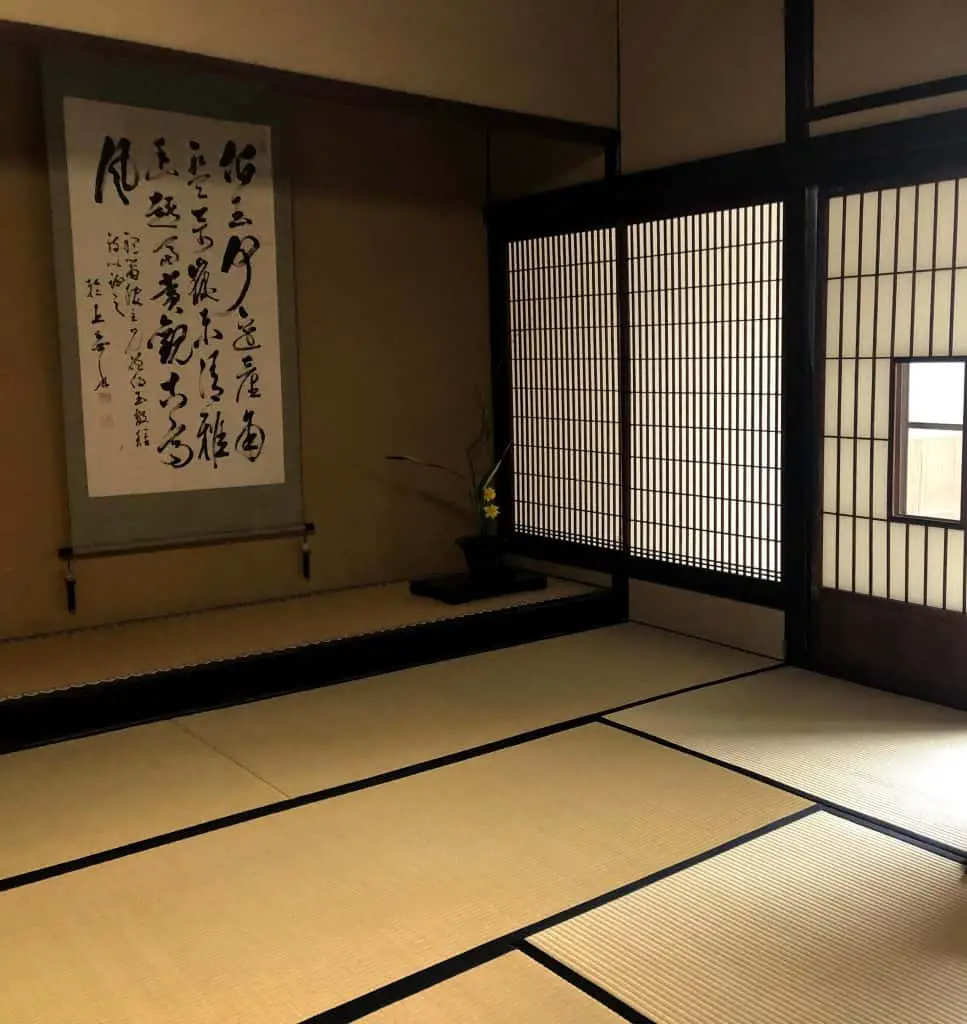
Japanese Scrolls 掛け軸
Today, good quality Japanese scroll representations can be found that achieve a similar effect at very reasonable prices. We have a page devoted to Japanese scrolls here if you would like to know more.
Ukiyo-e 浮世絵
But there’s a lot of other options available these days. Colourful “Ukiyo-e” style woodblock print reproductions are always and popular, and can offer a vivid splash of vitality to a room. Some of the scenes depicted in these are curiously remarkable. I’ve got one on my wall of a turtle being hoisted from a rope looking over a distant seascape! Go figure.
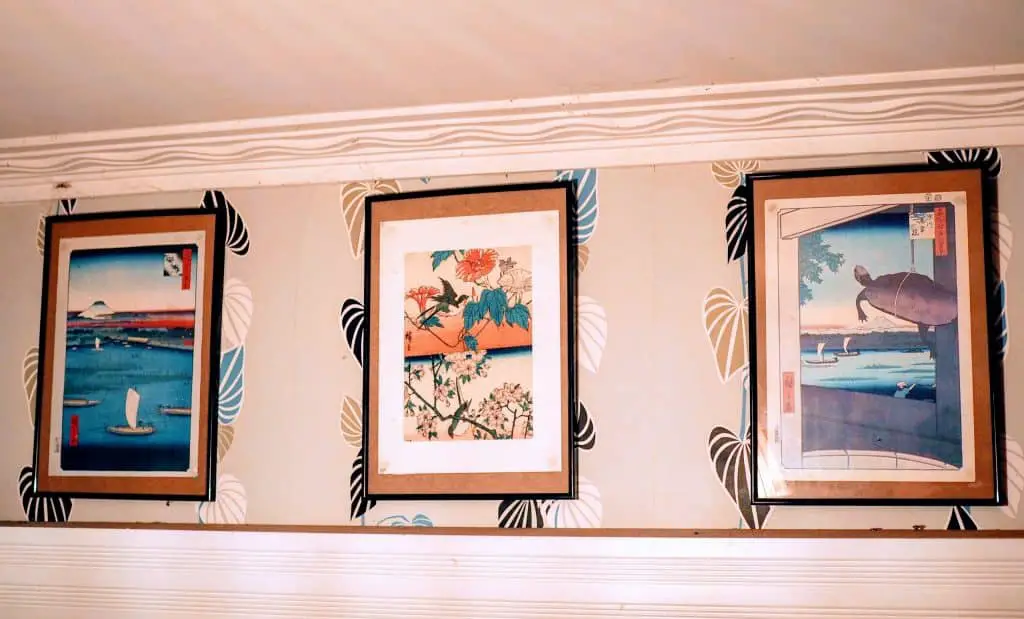
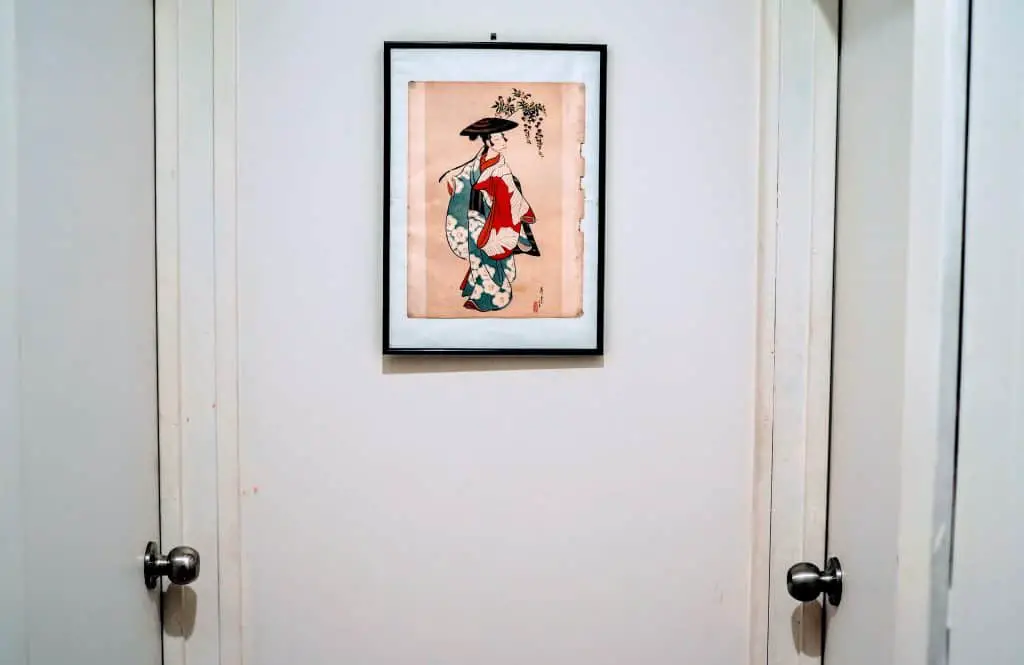
In recent years, people have started having a lot of fun with these Ukiyo-e style prints by inserting you’re favourite characters into the prints. You can find prints with Studio Ghibli characters such as Tottoro or Ponyo. I’m pretty sure if the wood block print masters of yore were working today they’d be doing themselves. Surely. Right? Hmmm.
Japanese Posters
Another option is go for something a little less traditional. There are some great Japanese posters around including Japanese movie posters for Western or Japanese movies, or posters for popular anime such as those produced by Studio Ghibli (of which we’ve got a gallery here).
We have a page devoted to Japanese wall art here and Studio Ghibli Poster here.
Another fun way to go is to get some Japanese print versions of your favorite movie posters!
#4
Create "virtual" spaces using Noren Hangings

In Japan there is often the sense of the delineation of space. Alex Kerr has written about the idea of “limination” that is found throughout Japanese culture where places are symbolically set apart to reflect the meanings they hold. So, we see things like gates that exist without walls, or different gradations of materials in gardens, or the use of noren. Noren are Japanese curtain hangings that are used to make a partial covering of an entrance, or within a room. They have a practical function, in that they provide a level of privacy whilst still allowing an ease of access. They also have a symbolic function of showing that a space is being entered that may be used for very different things to the space adjoining. So, you often see noren at the entrance to bathhouses, to show that you are now entering a space that is all about getting clean. You see them outside restaurants, where they are used to prepare the customer to get into the mindset of having a dining experience. But you also see them in homes, across kitchens, entrance ways, and even as room dividers, where they help delineate a home into functional and symbolic zones.
Many of them feature striking designs, and are works of art in their own right.
Check out our noren guide here.
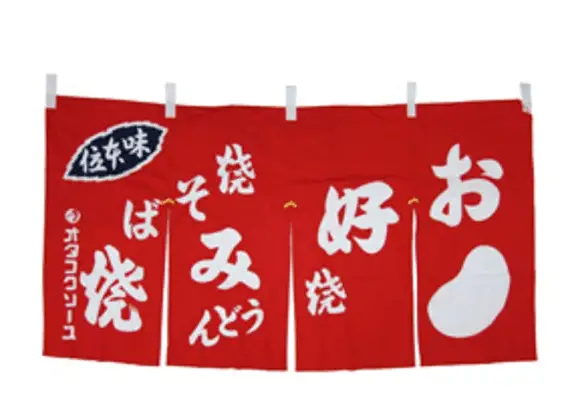
#5
Change bathing an experience using a Japanese soaking tub
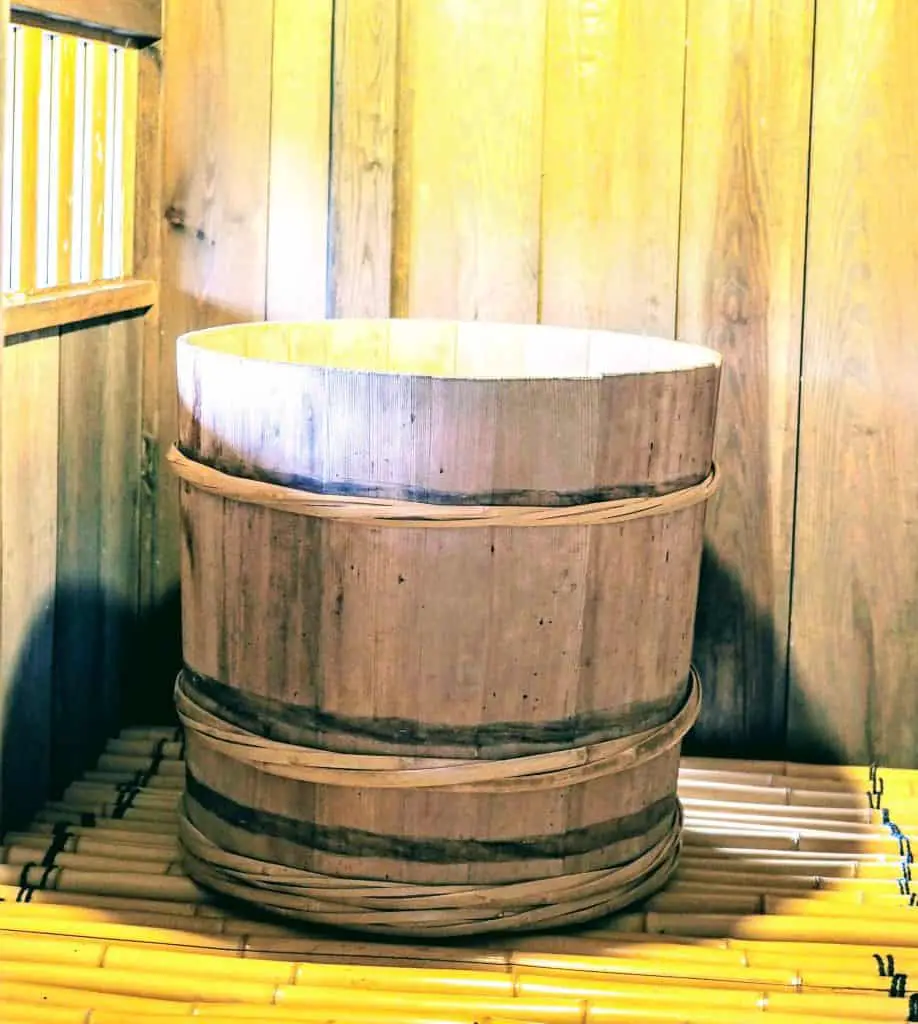
It’s hard to go back to a long, shallow Western style bath once you’ve gone deep, both literally and figuratively, into a Japanese bath. It’s one of the few contexts where “up to your neck in it” is a good thing. A great thing even. I think it’s such a great thing that I wrote a whole post all about my favorite Japanese bathes and soaking tubs here.
The main thing is to go for is depth. Then look for natural materials, such as wood, which is going to give you a beautiful rustic aroma and a full sensory experience.
After you’ve had your’re Japanese bath, I recommend slipping into your Jimbei as your post bath wear!
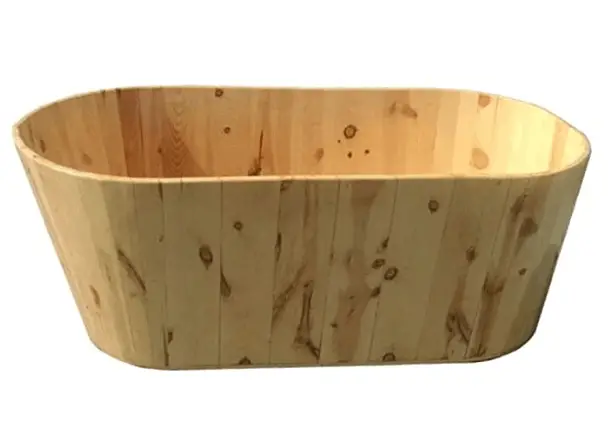
#6
Places patches of art on your floor with Japanese Zabuton Cushions
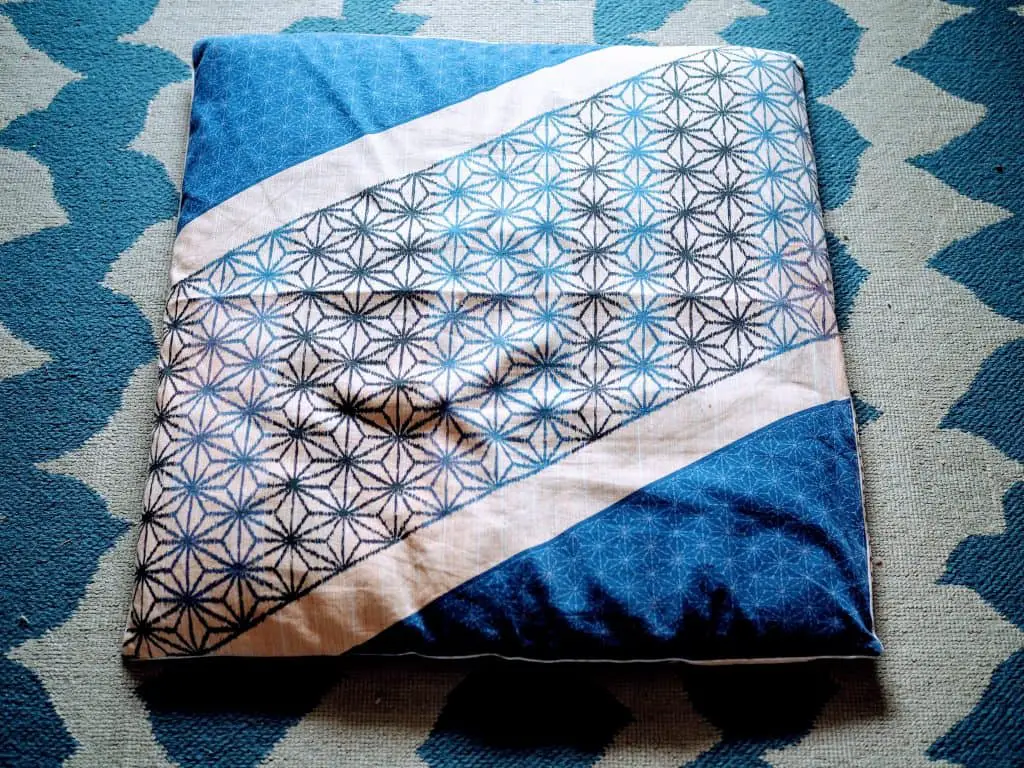
Japanese people love a little bit of floor time. And they’ve figured out to make both comfy and aesthetically pleasing through the use of the zabuton sitting floor cushion.
These work particularly well if you want to sit around a small Japanese table, such as a Chabudai. If it’s too much to sit on them un-assisted, you can compliment them with a zaisu style floor seat.
People in Japan tend to use these cushions all sorts of ways, such as rolling them up to create a little makeshift pillow. My seven year old daughter loves to arrange them on her bedroom floor to create her own little custom bed to sleep on!
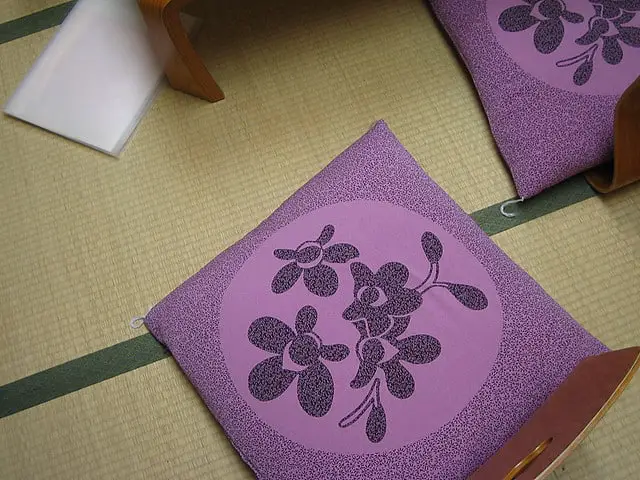
#7
Cool your atmosphere with Matchstick Blinds
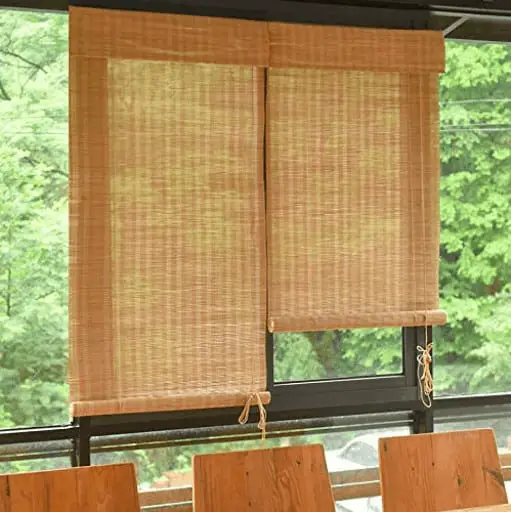
It’s a common sight to see Sudare 簾 hanging outside Japanese homes, efficiently blocking the heat before it enters into the house. Other’s place them inside the house in place of curtains. Sudare go by names including Matchstick Blinds, Bamboo Blinds and Woven Wood Blinds in English. They are potent symbol of summer in Japan and can add a rustic element to designs that are going for natural or earthy look.
#8
Love your floor with Japanese Tables
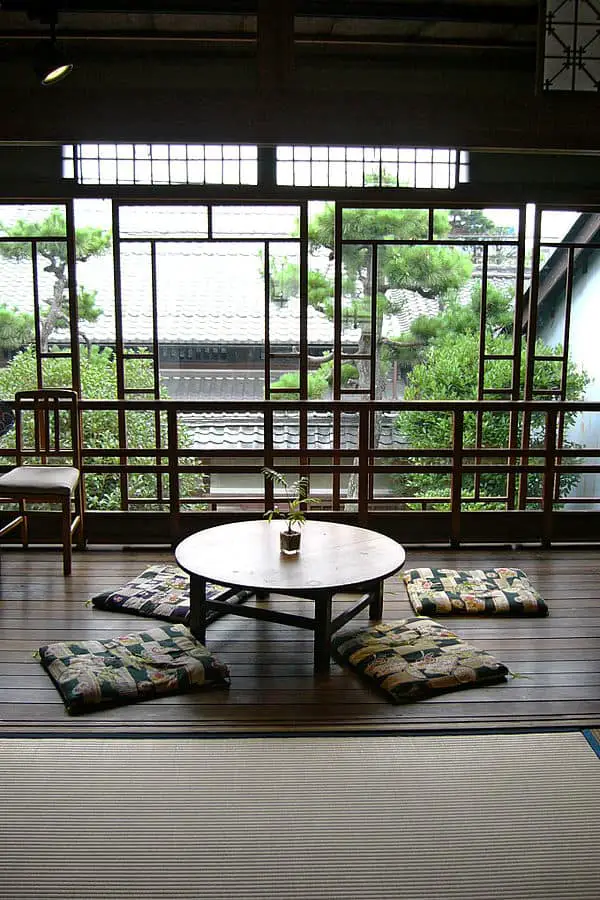
There’s something to be said for spending time on the floor. Sure couches and sofas a good, but there is really no surface that lets you splay yourself out more than the good old floor. So why not do like the Japanese do, get yourself some cushions and a small table to make it happen?
We’ve got a whole article about Japanese Tables here.

#9
Create a heat bubble in your living room with a Japanese Heated Table Kotatsu

If you’re going to have yourself a Japanese floor table, why not have one with a heater attached and be warm. Enter the Kotatsu. Japanese culture, they’ve been there, done that, and they have you covered. Literally.
If you’re intrigued to know more about how a table can keep you warm, check out our Kotatsu sets page.
Because I love Kotatsu, hey don’t judge, we’ve got pages on Kotatsu Blankets and Kotatsu heaters too.
#10
Lose the shoes (and put them in a rack)
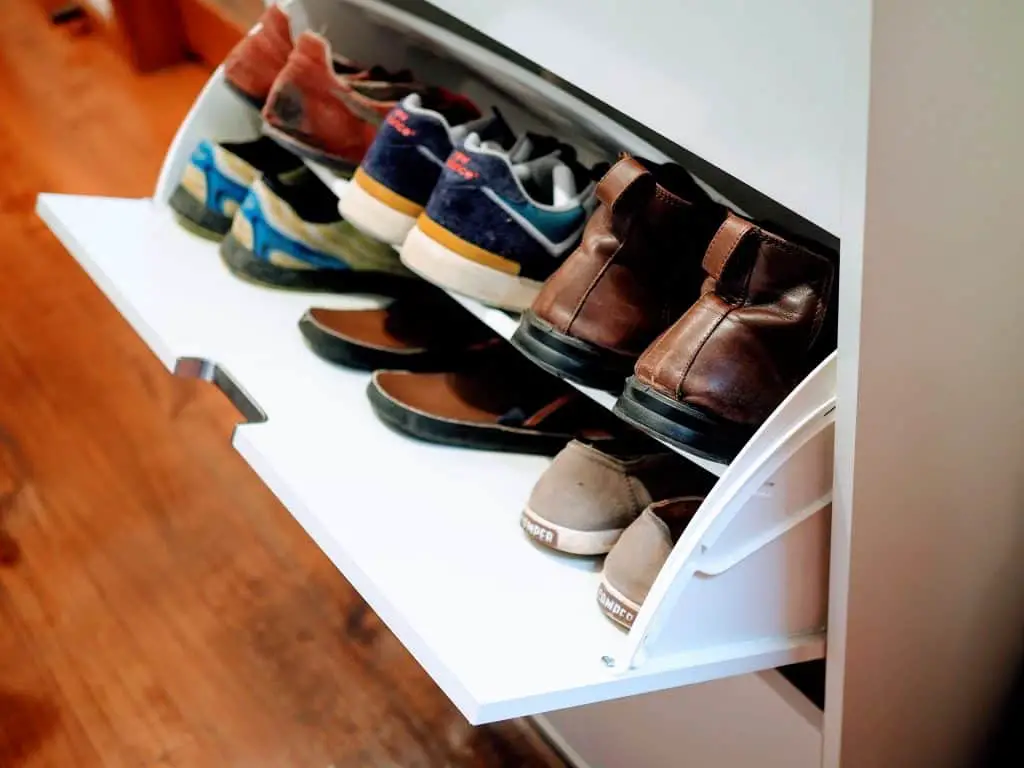
So, to state the obvious here, Japanese people don’t wear shoes in the house. There are various theories as to why some countries do wear shoes inside, and some don’t. One of the main ones for Japan is that, because of their climate, Japanese houses are generally raised off the ground. Thus, the floor is less of an extension of the outside earth, and more of a totally different space. You’ll notice that even in Japanese apartments, they build in a difference of height between the main living space and the entrance way.
Removing shoes obviously has its pluses and minuses. Probably the biggest plus is that taking off your shoes opens up the possibility of using your entire floor space as an area to “lounge around on”. If you are reasonably sure that your floor is relatively clean, then you are more comfortable to use the floor tables, the floor cushions, the futon for sleeping or the heated kotatsu.
If you do decide that you want to go the take-your-shoes of route, then the next problem that needs solving is what to do with all that footwear that collects around entrances. Which is why you won’t find a Japanese home without some kind of footwear storage solution inside the doors. So, if you really want to japanify your home, you’re going to need a shoe rack.
Recommended Japanese Home Products
Japanoscope uses affiliate links. Which means we may receive commisions when you click on some product links. We only link to products we believe in, use ourselves or think are genuinely good. This helps us keep all of the content on the site free of charge. As Monty Python once said, “We’re selling records in the foyer. Some of us have gotta eat too you know”.

Who is behind this site?
I’m Peter Joseph Head. I lived in Japan for four years as a student at Kyoto City University of the Arts doing a Masters Degree, have toured the country six times playing music and speak Japanese (JLPT N1). I’ve written songs in Japanese and have released several albums through Tokyo label Majikick Records.
ピータージョセフヘッドです。4年間京都市立芸大の大学院として日本に住み、6回日本で音楽ツアーをし、日本語能力試験で1級を取得しました。要するに日本好きです。












